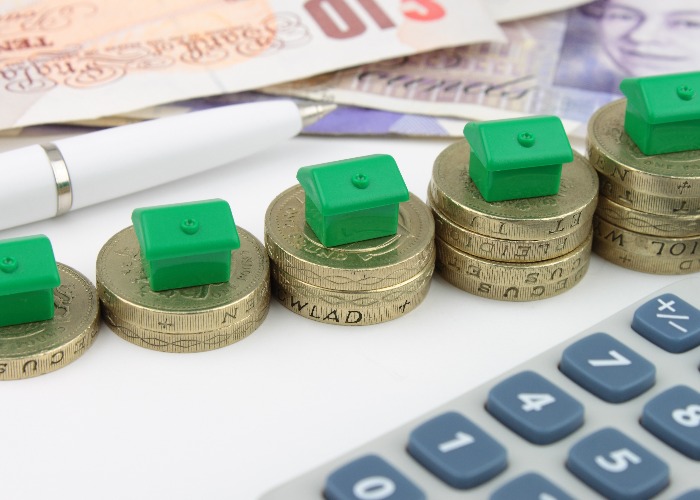Help to Buy ISA 'not fit for purpose'

The latest initiative from the Government to help people get on the property ladder is not fit for purpose, according to new research from the BBC.
The Help to Buy scheme, a Government initiative to help first-time buyers with small deposits get on the property ladder, has come under fire again.
A BBC investigation has described the latest feature, the Help to Buy ISA, which pays a bonus of up to £3,000 on savings that will be put towards buying a property, as not fit for purpose.
That’s because, in many areas, the average price of a starter home exceeds the maximum limit the Help to Buy ISA rules state you can use your savings and the Government bonus to buy.
The research is the latest evidence suggesting that the Help to Buy scheme as a whole might not be working, as rather than helping people buy a home it is pushing up house prices and not doing anything to boost the supply of affordable homes.
Compare mortgages with loveMONEY
Help to Buy ISA problems
The Help to Buy ISA allows first-time buyers to save up to £2,400 a year (plus a further £1,200 in the first year).
When you decide to use the money you’ve saved to buy a house the Government will pay you a 25% bonus up to a maximum of £3,000.
Read: Help to Buy ISA: what it is, rules and rates for first-time buyers for more.
But there’s a catch. The bonus is only available if you’re buying a property worth less than £450,000 in London or up to £250,000 in the rest of the England.
So if you aren’t able to find a property that meets this criteria, the £3,000 giveaway does not get paid.
However, the BBC’s analysis of asking price data in nearly 1,000 local areas on property website Zoopla shows the average cost of a starter home is just too expensive for many to benefit from the bonus.
When looking at asking prices for a two-bedroom house it found on average they exceeded the cap in 67% of areas in the South East, 65% in London, 61% in the South and 53% in the East of England. This compares to less than 5% of areas exceeding the cap in the North East , the Midlands and Lincolnshire.
Overall outside London, the asking prices of two-bedroom houses exceeded the purchase price limit in 28% of areas.
The most expensive area outside London was East Molesey in Surrey, where the average cost of a two-bedroom house was a whopping £551,025. Ferryhill in County Durham had the cheapest average asking price, at just over £45,000.
The analysis also found that the average two-bedroom flat in London exceeds the £400,000 cap in two thirds of boroughs, while a one-bedroom flat exceeds the cap in a third of areas and just 10% of average three-bedroom homes are below the cap.
Outside of London the highest average asking price for a one-bedroom flat was in Berkhamstead in Hertfordshire at £408,000.
Nearly all the most expensive areas for one-bedroom flats were in southern England, with Matlock in Derbyshire the farthest north where the cap didn’t hold up where middle of the range apartments were £250,150.
You can see how the BBC analysis of the Zoopla data stacks up in your area here.
Helping ‘the lucky few’
Shelter said the clause in the Help to Buy ISA meant the savings scheme was only helping ‘the lucky few’.
Campbell Robb, chief executive of housing charity Shelter, told the BBC: "Soaring housing costs have left millions of people stuck in a rent trap and struggling to save anything towards a home of their own.
"The Help to Buy ISA only helps the lucky few who are better off, or able to live with their parents while they save for a deposit. For the vast majority of renters who want to move forward in life and put down roots, this scheme brings them no closer to that dream.”
However, a Treasury spokesman hit back: "The Help to Buy Isa scheme was introduced to support those that are struggling to save enough to get onto the housing ladder. The property price cap allows the Government to target support at those who are saving to buy their first home."
Wider problems of Help to Buy
You can use the Help to Buy: ISA with other Government schemes designed to help buyers with small deposits buy a home that go by a similar name, including the Help to Buy: Mortgage Guarantee Scheme and the Help to Buy: Equity Loan Scheme.
One involves a Government loan to help buyers buy a new build property, while the other sees the Government guarantee borrowing for people with small deposits on any type of home.
The latest figures show by March 2016 more than 150,000 people had used these schemes.
Read: Help to Buy mortgages explained for more.
However, these schemes have also come under fire.
They’ve been criticised for boosting demand without dealing with the real problem of supply, which is leading to house prices rising further out of reach for many.
The latest ONS House Price Index shows that house prices have increased by 8.2% in the year to April 2016 , which continues the strong growth which picked up right around the time Help to Buy mortgages were launched in April 2013.
Robb added: "If the Government genuinely wants to help the nation's renters get a foot on the housing ladder, it needs to look beyond quick-fix schemes, and invest in homes that people on ordinary incomes can actually afford."
Compare mortgages with loveMONEY
Don’t miss these:
Landlords: how to cut your buy-to-let costs
Leasehold vs Freehold property: what you need to know
Here are the questions you need to ask before renting a property
Comments
Be the first to comment
Do you want to comment on this article? You need to be signed in for this feature